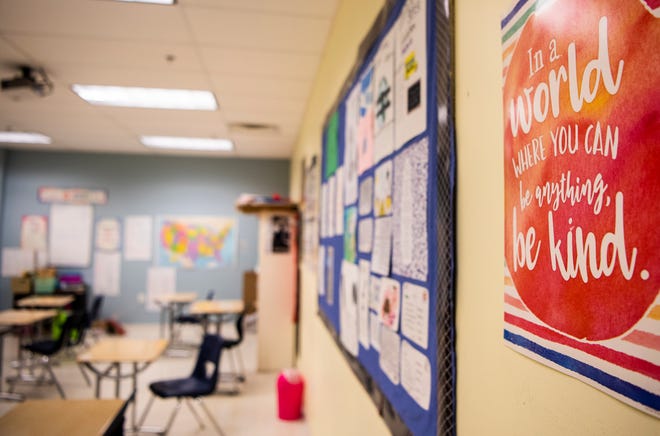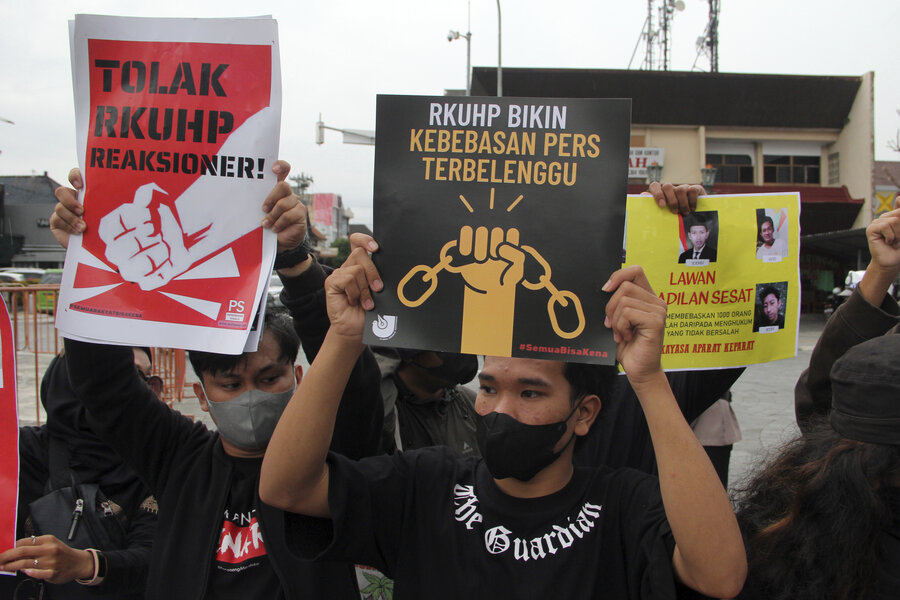When Alexandria Eustice studied Truman Capote’s novel “In Cold Blood,”her English teacher didn’t simply tell the class it was written by an openly gay author.
Instead, the teacher asked the students to analyze how Capote’s sexuality shaped his writing and point of view.
“She mentioned [his sexuality] and connected it to the class,” said Eustice, who is a junior at Cedar Grove High School. “Rather than saying ‘we’re reading a book by a gay author’ it was ‘we’re reading a book and he’s gay and it affects the book.’ I hadn’t seen that in another class.”
That change is because of a law, now a year old, that requires New Jersey educators to include LGBTQ lessons and focus on people with disabilities in the curriculum.
It has not gone unnoticed by Eustice, a leader of her school’s Gender and Sexuality Alliance. More lessons include LGBTQ people this year, and some teachers are changing the way they talk about gender and sexuality, Eustice said. .
The effort started with a dozen schools participating in ready-made lessons created by the LGBTQ-Inclusive Curriculum Pilot Program, a collaboration with Garden State Equality and Make It Better for Youth.
New Jersey is the first state in the nation to require LGBTQ-inclusive teachings in all subject areas. California and Colorado passed similar laws that required inclusive lessons only in history and social science courses.
Incorporating the inclusive curriculum is “a mindset shift,” said Emily Susko, the assistant director of academics at Bergen Arts and Science Charter High School.
LGBTQ-inclusive Curriculum Pilot Program managers found that many teachers who participated in the pilot program lacked a basic understanding of LGBTQ topics, according to survey data they compiled after the pilot program ended in June 2020.
Cedar Grove High School GSA leaders saw this knowledge gap at their school, in a conservative-leaning town, and believe that has led to homophobia and transphobia within the community.
“I feel like the main reason that people are openly homophobic is because they’re not really taught this stuff and they don’t really understand it,” said Sofia LaForgia, a Cedar Grove High School GSA leader. “By implementing a curriculum where it’s mandatory to learn about [LGBTQ topics] … they’re learning a lot more about it.”
Some parents and community members pushed back against the LGBTQ-inclusive curriculum because of this mindset shift idea that Susko mentioned.
Lindsey Daly, a middle school teacher at Unity Charter School in Morristown, heard concerns that the curriculum had “an agenda.” A Facebook group called Team Protect Your Children-NJ formed to protest the curriculum before the law passed. The page’s description expresses concern that the curriculum would teach “lifestyles” that conflict with certain religious values.
But Daly said the curriculum only aims to include.
“It’s to give kids even more information,” Daly said. “They can form their own opinions; it still promotes critical thinking. We’re giving them the full story, whereas they typically only get a small piece of it.”
Both students and teachers are learning
Teachers have an opportunity to learn along with students, said Stephen Innocenzi, a theater arts instructor at Bergen Arts and Science Charter High School in Hackensack.
“It’s an ongoing thing, and I have worked and formed bonds with people who are very different from me,” Innocenzi said. “If you’re going to really impart any kind of understanding of human beings and nature, you have to build a culture around it.”
Cultures surrounding people “tell us what we can or cannot be,” said Kate Okeson, the co-founder of Make It Better for Youth and the LGBTQ-Inclusive Curriculum Pilot Program’s lessons and resources manager.
Survey data from the pilot program found that 92% of teachers who participated felt confident that they could create “an inclusive and affirming classroom environment for LGBTQ students.” However, a quarter of administrators surveyed do not believe staff members hold each other accountable “for promoting the safety and well-being of LGBTQ students.”
Daly notices when students see themselves reflected in her social studies lessons.
“You can just tell [students] feel more confident and more accepted,” Daly said. “They’re more excited about learning, and I think that’s definitely the best part of this curriculum.”
Although it’s called a curriculum, Okeson and her team created lessons and tools intended to be woven into existing curricula. It’s “supplemental” and intended to be built upon, said Lori Burns, pilot program manager and lead researcher.
The program’s materials give teachers tools to seamlessly include LGBTQ topics in typical lessons, like using same-sex parents in a math problem.
It’s a “simple practice of examining lessons you teach,” Burns said, and asking “whose voice was heard and whose voice wasn’t?”
Building an inclusive school culture can look like increasing diverse representation in books available at school libraries, or making room in budget funds for gender and sexuality student groups. In addition, using lessons the team created “sets the tone” that schools are “intentionally inclusive,” Okeson said.
“We model visibility every day in the classroom,” she said. “We try to show [educators] teaching methods that work to make sure their students feel they’re part of the conversation.”
‘Hey, there were other people around’
Eustice and her fellow GSA leaders learned more about LGBTQ history beyond the Stonewall Riots of 1969, often considered the starting point of the LGBTQ rights movement. .
“Not that [textbooks students currently use] are not giving good information, but the information is coming from the people who historically have always held the power,” Daly said. “This curriculum is just saying, ‘Hey, there were other people around, there are other stories that should be told and now we’re going to pay more attention to telling them.'”
In the near future, program managers hope to conduct another study after a full year of schools consistently using LGBTQ-inclusive lessons.
One key data point, though, Burns already knows: “We all know the world is very diverse, and that needs to be reflected in what we teach our students,” Burns said. “All research proves that when students learn about people that are different than themselves, it benefits them when they become an adult.”
Cedar Grove school district students gained support from the Board of Education, whose members recently agreed to fly rainbow flags at all five school buildings. With this change and the curriculum, it “pushes the climate to be better and the attitude of our town to be different,” said Shayna Merilan, another Cedar Grove High School GSA leader.
“It’s setting future generations up to have a better experience,” Merilan said. “It’s what has to be done so that kids can feel more comfortable, welcome and safe within the town, within the district and especially within the high school.”
Contact Sammy Gibbons at (920) 737-6895 or sgibbons@gannett.com. Follow her on Twitter at @sammykgibbons or Facebook at www.facebook.com/ReporterSammyGibbons/.








